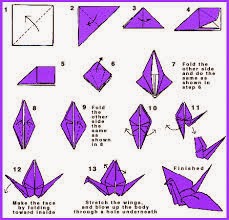The kimono is the traditional dress of Japan, and it is worn nowadays on formal occasions. It is sometimes accused of being an impractical form of dress, but it has the advantage of giving the wearer a graceful and elegant deportment.
Ref:
http://www.jnto.go.jp/eng/indepth/cultural/experience/q.html
2.Food culture..Sushi.
The signature of Japan.
During the Edo period, "sushi" refered to pickled fish preserved in vinegar. Nowadays sushi can be defined as a dish containing rice which has been prepared with sushi vinegar. There are many different types of sushi. Some popular ones are:
Nigiri
Small rice balls with fish, shellfish, etc. on top. There are countless varieties of nigirizushi, some of the most common ones being tuna, shrimp, eel, squid, octopus and fried egg.
Gunkan
Small cups made of sushi rice and dried seaweed filled with seafood, etc. There are countless varieties of gunkanzushi, some of the most common ones being sea urchin and various kinds of fish eggs.
Norimaki
Sushi rice and seafood, etc. rolled in dried seaweed sheets. There are countless varieties of sushi rolls differing in ingredients and thickness. Sushi rolls prepared "inside out" are very popular outside of Japan, but rarely found in Japan.
Temaki
Temakizushi (literally: hand rolls) are cones made of nori seaweed and filled with sushi rice, seafood and vegetables.
Oshizushi is pressed sushi, in which the fish is pressed onto the sushi rice in a wooden box. The picture shows trout oshizushi in form of a popular ekiben (train station lunch box).
Inari
Inarizushi is a simple and inexpensive type of sushi, in which sushi rice is filled into aburaage (deep fried tofu) bags.
Chirashi
Chirashizushi is a dish in which seafood, mushroom and vegetables are spread over sushi rice. It can resemble domburi with the difference being that chirashizushi uses sushi rice while domburi uses regular, unseasoned rice.
Note that "sushi" becomes "zushi" in word combinations in which "sushi" is the second word, e.g. nigirizushi.
ref : http://www.japan-guide.com/e/e2038.html
3.Origami
Origami (折り紙?, from ori meaning "folding", and kami meaning "paper" (kami changes to gami due to rendaku) is the traditional Japanese art of paper folding, which started in the 17th century AD at the latest and was popularized outside of Japan in the mid-1900s.
http://www.origami-instructions.com/
http://en.origami-club.com/
3.Packaging..
https://www.pinterest.com/AoZR/japanese-packaging/
http://en.rocketnews24.com/2013/10/24/10-beautiful-packaging-designs-from-japan/
4.Artistic values
There are 9 Japanese aesthetics. They are the basis for Japanese art, fashion, pop culture, music and movies.
-Wabi-sabi (imperfect)
-Miyabi (elegance)
-Shibui (subtle)
-Iki (originality)
-Jo-ha-kyu (slow, accelerate, end)
-Yugen (mysterious)
-Geido (discipline and ethics)
-Ensou (the void)
-Kawaii (cute)
More reading on this values...
http://www.japan-talk.com/jt/new/9-principles-of-Japanese-art-and-culture
5.Pottery
Explore Japanese Ceramics..
http://www.explorejapaneseceramics.com/
......
















No comments:
Post a Comment